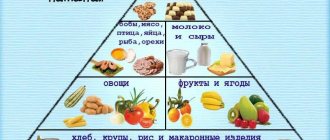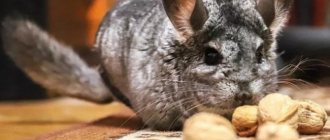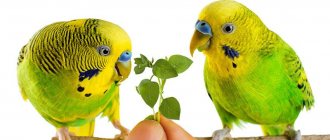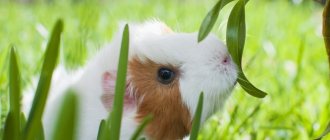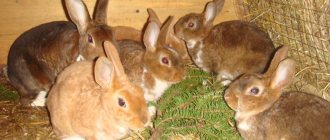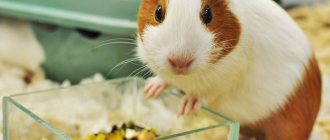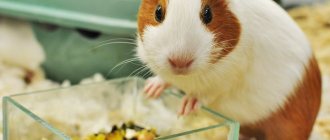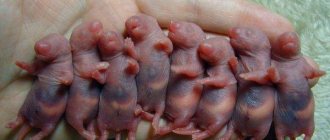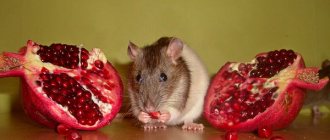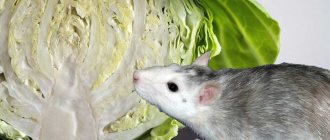Rabbits are exclusively herbivorous mammals. Therefore, their diet should consist of useful vegetation as much as possible. The green “menu” should be given special attention. Not all plants are useful, and some can simply lead to the death of animals. Therefore, rabbit breeders should be well acquainted with which greens are acceptable and which ones should not be fed to their pets.
Beneficial properties of herbs
In spring and summer, green food is the main food for rabbits. It is juicy, contains a lot of water, but also contains all the nutrients rabbits need: complete proteins, simple carbohydrates, minerals, vitamins, enzymes, some fats, chlorophyll. Plus, grass is always available and free.
Young grass is comparable in nutritional value to concentrates, and surpasses them in biological value. On average it contains:
- proteins – 20-25%;
- nitrogen-free substances – 30-60%;
- fat – 4-5%;
- fiber – 10-15%;
- minerals – 9-11%.
Many plants suitable for rabbits' food are found everywhere. For example, the most common dandelions increase appetite, contain a lot of protein, but at the same time little fiber. It is best to give them not separately, but together with other herbs in a volume of 30% of the total amount.
Siberian hogweed (leaves only) is useful to feed to lactating females to increase milk production. Nettle will provide the body of rabbits with protein and vitamins; it can be used for stomach disorders and hemorrhages, as an antimicrobial agent (in this case, leaves are used, which are collected at the end of the first or at the beginning of the second summer month) and as a milk extractor. Nettle is fed 2-3 times a week, given fresh (scalded with boiling water, dried, crushed and sprinkled with dry food). Stems with leaves (without flowers) are prepared for the winter: dried in the shade and stored along with the rest of the hay in an unlit and dry place.
Coltsfoot can also be fed either fresh or dried. It is especially useful for diseases of the stomach, lungs and bronchi, and normalizes digestive processes.
Common wheatgrass, which grows everywhere, has high nutritional value and has a diuretic effect. Plantain contains a lot of vitamins and protein and has a wound-healing effect. Wormwood not only increases appetite, prevents gastric disorders, but also helps rabbits get rid of worms. However, its share in the total diet of green food for animals should not exceed 40% (due to the likelihood of nervous excitement).
Many plants, such as yarrow, burdock, plantain, and onion, contain phytoncides that help fight infections.
How to grow green food on your own plot
You can grow salads and grains on the windowsill for rabbits - barley, wheat, oats, buckwheat. They are rich in vitamins B-complex, E and K, phosphorus, magnesium, potassium, protein. They contain a lot of fiber, which is beneficial for the animal. Such food is not only environmentally friendly, but also healthy.
Any container is suitable for growing grass. It could even be an empty tin can or flower pot. Greens do not need a deep layer of soil, so it is better to use plastic boxes. Plants are sometimes grown in sawdust or cat litter.
The seeds are sown scattered and the substrate is sprayed with a spray bottle. After the seeds are placed in the “soil” and watered, cover the container with film to create a greenhouse effect. Everything will germinate in 5 days.
Rabbit breeders recommend using grain seeds for planting, which are purchased to feed the pet. They germinate better and do not contain herbicides that are used to treat grains in the agricultural sector.
For planting in the ground on personal plots, both grains and herbs of agricultural importance are used - mustard, clover, alfalfa. You need to sow shallowly in moist soil. After sowing, monitor the condition of the soil and water when dry.
To organize crop rotation, you can plant greens in batches every few days.
What grass can you give to rabbits?
Animals can be fed with plants grown in their own garden or collected from meadows and fields. These are types such as:
- red and white clover, sow thistle, burdock, wheatgrass, dandelion, American chamomile;
- alfalfa, lupine, vetch, sainfoin, sweet clover, peas, meadow china, ryegrass, mouse peas and many other legumes;
- oats, wheat, rye, corn, brome, millet, sorghum, bluegrass, barley, sudanese, timothy and other cereals;
- rapeseed, rapeseed, mustard;
- knotweed, amaranth and amaranth, garden sorrel and horse sorrel;
- phacelia;
- woodlice, shepherd's purse, quinoa, yarrow, chicory, goat's rue, mallow and even sedge and reed.
Rabbits also eat weeds left after weeding the garden and thinned out grown vegetable plants. Animals will be delighted if you offer them: tops of celery and carrots, rhubarb, radishes, turnips, rutabaga, parsnips, leaves and stems of Jerusalem artichoke and sunflower.
Leaves of beet, sugar, red, fodder can be given, but in limited quantities due to the laxative effect inherent in plants on the rabbit’s body. It is useful to feed the tops not separately, but together with alder or oak branches, yarrow, which have astringent properties. You can also give greens: parsley, spinach, cumin, dill, as well as branches of fruit trees, hazel, birch, willow, etc.
There is a conflicting opinion about whether it is possible to give rabbits milkweed, which has a milk-producing effect. Some rabbit breeders claim that due to the content of euphorbin, a toxic substance that disrupts digestion, the grass leads to heart failure and convulsions. Others say that poisoning only occurs when overfeeding.
Often those who keep rabbits as pets are interested in what types of grass can be given to decorative rabbits. They can be fed with the same plants as animals of ordinary breeds, but they must be given in small portions, in a mixture, and not as a single component, and monitor how the animal’s body reacts to them.
Garden greens are an important component of the diet
Herbal products growing in the home garden include numerous weeds, tops of root crops, specially sown legumes and cereals. Various garden greens that appear in the spring are suitable for feeding the animals.
Early cabbage and the grassy tops of young carrots are a favorite delicacy of eared animals. Various garden weeds can be an excellent help for feeding these pets. With great pleasure, rabbits eat horse sorrel, beet tops, parsley, celery, and parsnips. Rhubarb is a plant that contains the maximum amount of vitamins for these animals.
Many farmers specifically sow certain plants in their gardens. Baby peas and vetch are typical early bunny grasses that are easy to grow and harvest. Animals love leguminous plants very much. Their consumption promotes rapid growth and weight gain.
Tansy, clover, meadow china, fireweed, nettle, and sweet clover effectively strengthen the immunity of rabbits. In addition, plants such as tansy, garlic, dill, and pumpkin seeds have a pronounced anthelmintic effect.
Red clover contains about 20% protein, but its consumption should be limited. Some cereals will be very useful for eared pets. For example, oats, corn, rye.
These foods differ in calorie content. They are collected in early summer, lightly dried and added to feed. During the warm period of the year, you can get two harvests of oats. Such mixtures are about 70% cereals and 30% other green herbs.
Medicinal herbs
Among the medicinal plants you can find those that will also be useful for rabbits. Animals can be fed plantain rhizomes and leaves, mint, sage, tansy, fireweed, lemon balm, coltsfoot, licorice, etc. Little by little (no more than 30% of the total green food ration) is added to regular grass to diversify the diet. and improving the health, coat and taste characteristics of meat throughout the life of the animals. Motherwort, although not poisonous to animals, is not recommended to be fed in large quantities.
Harvesting and feeding of beneficial herbs for rabbits is carried out not only at the beginning of the plant growing season, but practically throughout the warm season, until autumn. Before feeding, fresh grass must be dried. For the winter, dry in the shade and store in a dry and unlit place.
We recommend reading
Is it possible to give rabbits burdock, feeding norms
What kind of sorrel can be given to rabbits, in what quantities?
The benefits of alfalfa for rabbits, feeding rates
Rules and regulations for feeding rabbits with fresh cucumbers
Poisonous herbs
It is noted that even harmful plants, if they are withered and dried, partially lose their toxic properties. Therefore, if some herbs are found among the forbs in a new place, the food should be given not fresh, but after drying.
Definitely, in any form, you should not give the following grass to rabbits:
- common datura;
- poisonous buttercup;
- belladonna;
- horned cornflower;
- white hellebore and Lobel's hellebore;
- intoxicating tares;
- ambrosia.
Poisonous grass for rabbits also includes:
- common thorn;
- vekh poisonous;
- black henbane;
- nightshade;
- raven eye;
- cockle;
- spotted arum.
Poisonous plants for rabbits can be:
- anemone;
- Ivan-da-Marya;
- swamp whitewing;
- autumn colchicum;
- wrestler (wolfsbane);
- marsh marigold;
- larkspur.
Rabbits should not be given potato tops and some plants considered medicinal, for example, hemlock, celandine, auranium officinalis, foxglove, lily of the valley, poppy and St. John's wort, horsetail. Even in small quantities they can cause poisoning, disruption of many organs, paralysis and death of animals.
Plants dangerous to animal life
When raising rabbit animals, it is important to have a clear idea of what grass should not be given to rabbits. First of all, animals should not be fed moldy, rotten plants. But a poisonous crop can also be found among fresh grass feed. Many toxic herbs lose their toxic properties when dried, so they should be given to animals only in dry form.
The most dangerous species for the health of eared animals are some common green plants. One of the most dangerous herbs is aconite, which is found everywhere. All parts of this plant are literally saturated with toxic substances. At the same time, the poisonous components remain active even after the stems and leaves have completely dried. They can negatively affect the functions of the respiratory system.
Another common plant that is banned is greater celandine. It in any form can cause convulsions, general weakness, and digestive disorders.
Hellebore can cause increased salivation, diarrhea, convulsions, fever, and paralysis in animals. Ranunculus is not a deadly herb, but it can cause severe digestive upset. Lumbago is a more poisonous crop that provokes shortness of breath, cardiac dysfunction, and disorders of the digestive system.
Marsh marigold retains toxic substances even after drying. When ingested by animals, dysfunction of the liver, kidneys, and gastrointestinal tract is possible.
Basic rules and norms of feeding
Do not feed wet grass to rabbits: after rain or with dew, just cut and warm. It easily causes bloating in animals. Any fresh plants should be dried before distribution. Avoid feeding rabbits with low-quality grass and hay: moldy, rotten, rotten, dirty.
You should not feed greens collected along the edges of large and busy highways - the dust and exhaust gases they contain can lead to digestive disorders. The same applies to weeds collected from the garden after treating the beds with agrochemicals.
The most nutritious grass is young, harvested before the flowering period, then it becomes coarser, the content of useful substances in it gradually decreases, and fiber, on the contrary, increases. Legumes can be mowed during the period of budding and the beginning of flowering
You can feed rabbits in the summer with a mixture of any garden and meadow plants; they can be a good replacement for juicy and roughage food, but their total amount should be no more than 30-40% of the total feed.
The diet should be varied: weeds and meadow herbs, tops should be combined with vegetables, grain mixtures, and animal feed. Introduce new plants into the menu gradually, over about a week, and in small portions.
On a day, rabbits can eat:
- succulent females – 0.8-1 kg of grass;
- female rabbits with babies – 1.2-1.5 kg;
- single females – 0.8 kg;
- baby rabbit up to 3 months – 0.25-0.5 kg;
- from 3 to 6 months – 0.5-0.9 kg.
In the spring, when switching from a winter diet to a summer one, grass should be introduced into the menu gradually, over 1-1.5 weeks (50-60 g per day).
